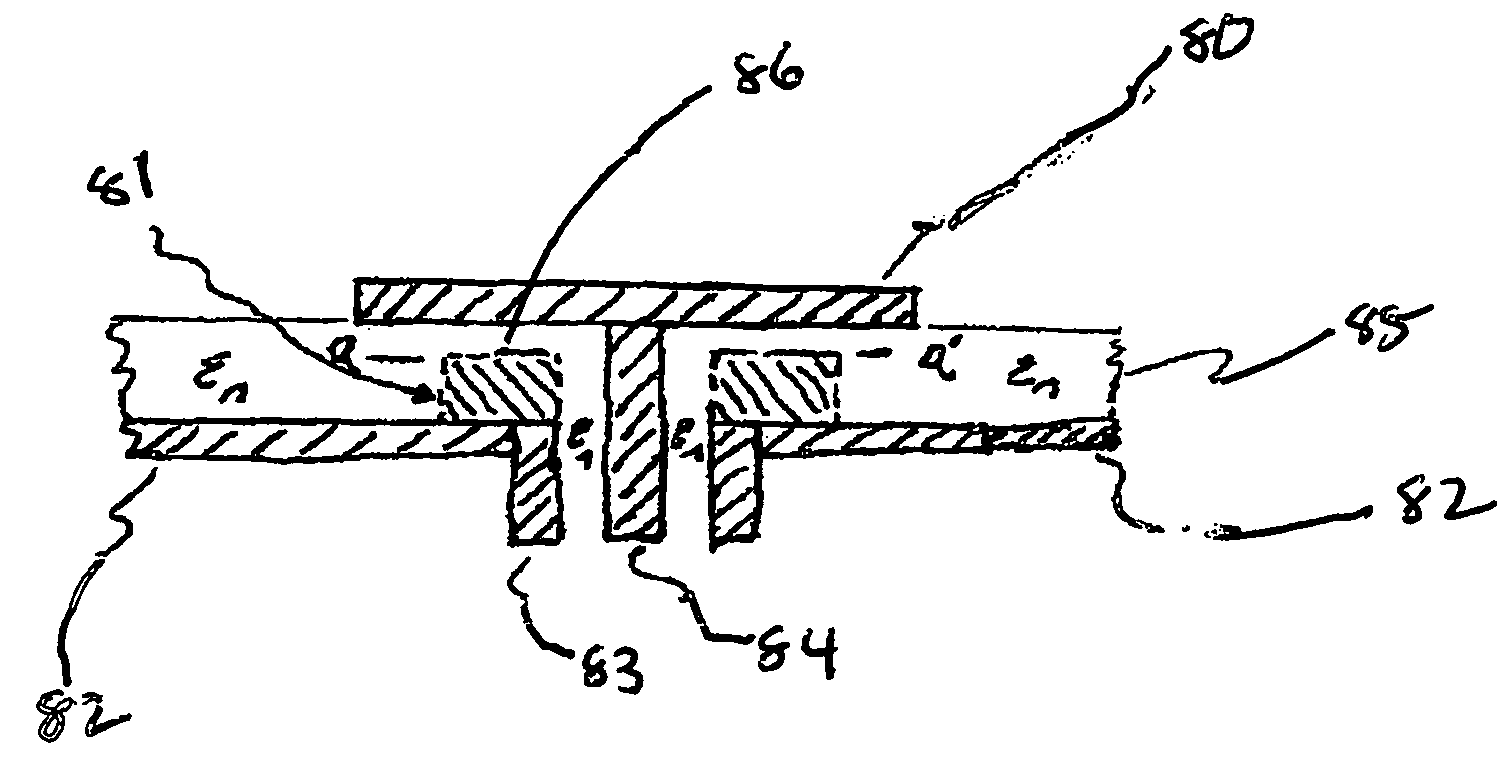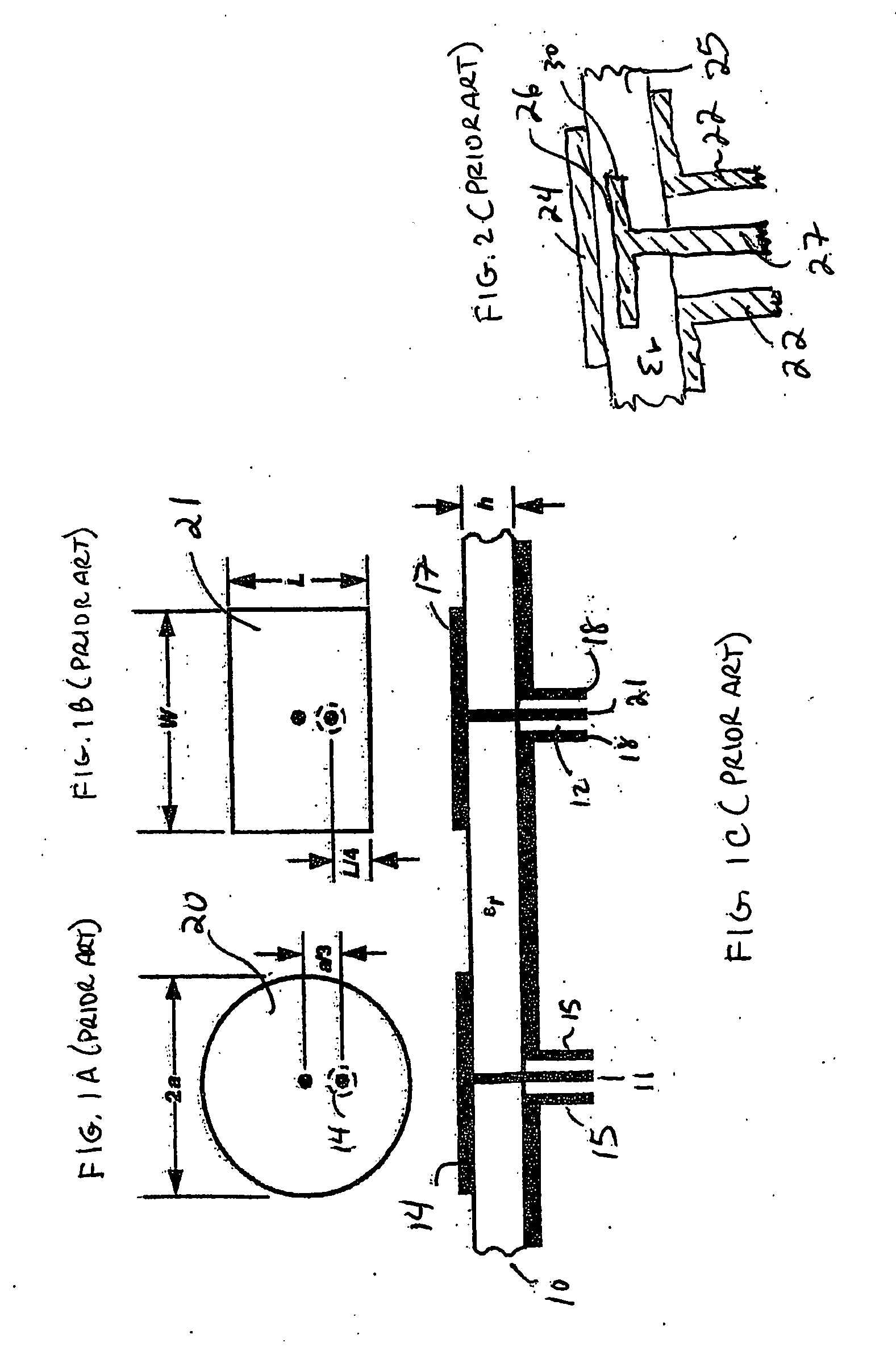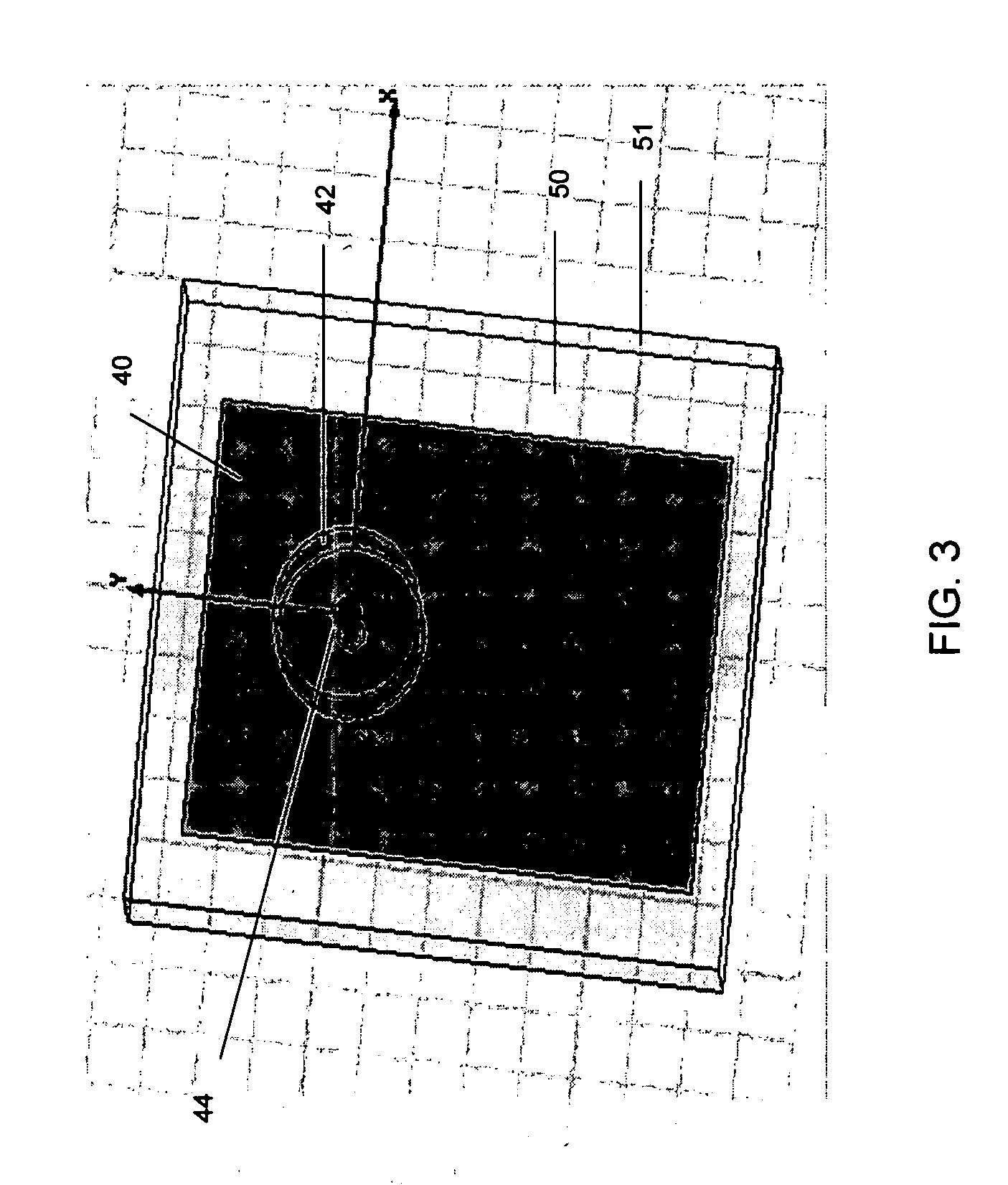Probe fed patch antenna
a patch antenna and antenna technology, applied in the direction of resonant antennas, substantially flat resonant elements, radiating element structural forms, etc., can solve the problems of increasing the thickness of the antenna, increasing the lateral size of the antenna, and the device's relatively narrow bandwidth, so as to reduce the complexity and cost of elements, improve manufacturability, and reduce mechanical/electrical complexity.
- Summary
- Abstract
- Description
- Claims
- Application Information
AI Technical Summary
Benefits of technology
Problems solved by technology
Method used
Image
Examples
Embodiment Construction
[0020]Before proceeding with the description of the invention, reference is made to FIG. 1, which consists of FIGS. 1a, 1b and 1c. FIGS. 1a, 1b and 1c depict prior art coaxial fed microstrip antennas. Referring to FIG. 1a, there is shown a round or circular microstrip antenna, while FIG. 1b depicts a rectangular microstrip antenna. Although the two most common element configurations are rectangular and round, the antenna itself may be square, rectangular, round, elliptical or other such geometrical shape. The microstrip antenna is well known and for example of such antennas reference is made to the text “Electronic Engineers Handbook 3rd Edition” by D. C. Fink et al. chapter 18 entitled “Antennas and Wave Propagation” pages 18-40 to 18-35. The text shows microstrip antennas and the structures depicted in FIGS. 1a to 1c are taken from that text. See also a text entitled Broadband Microstrip Antennas by G. Kumar & K. P. Ray published by AirTech House (2003). See page 62 depicting seri...
PUM
 Login to View More
Login to View More Abstract
Description
Claims
Application Information
 Login to View More
Login to View More - R&D
- Intellectual Property
- Life Sciences
- Materials
- Tech Scout
- Unparalleled Data Quality
- Higher Quality Content
- 60% Fewer Hallucinations
Browse by: Latest US Patents, China's latest patents, Technical Efficacy Thesaurus, Application Domain, Technology Topic, Popular Technical Reports.
© 2025 PatSnap. All rights reserved.Legal|Privacy policy|Modern Slavery Act Transparency Statement|Sitemap|About US| Contact US: help@patsnap.com



